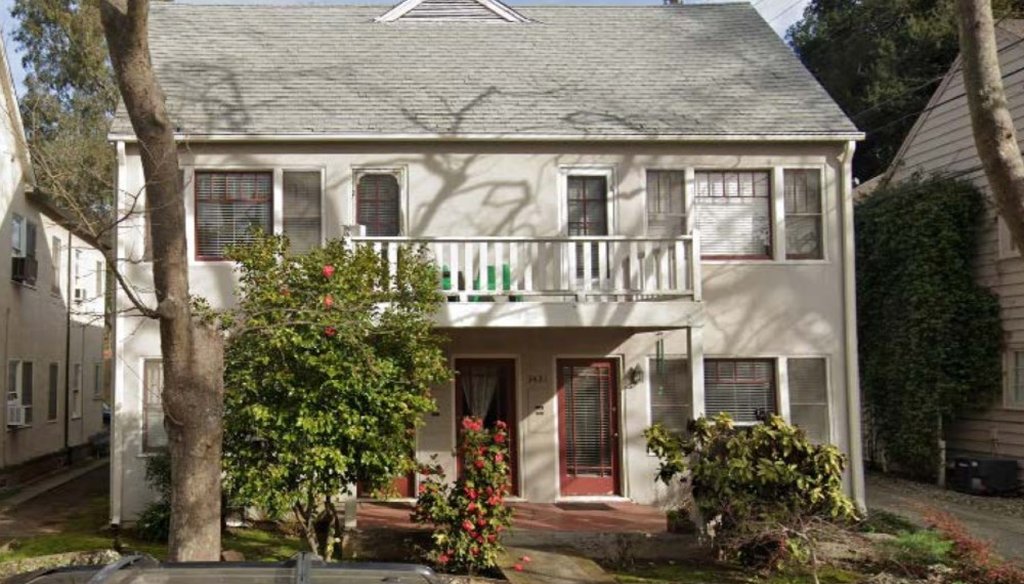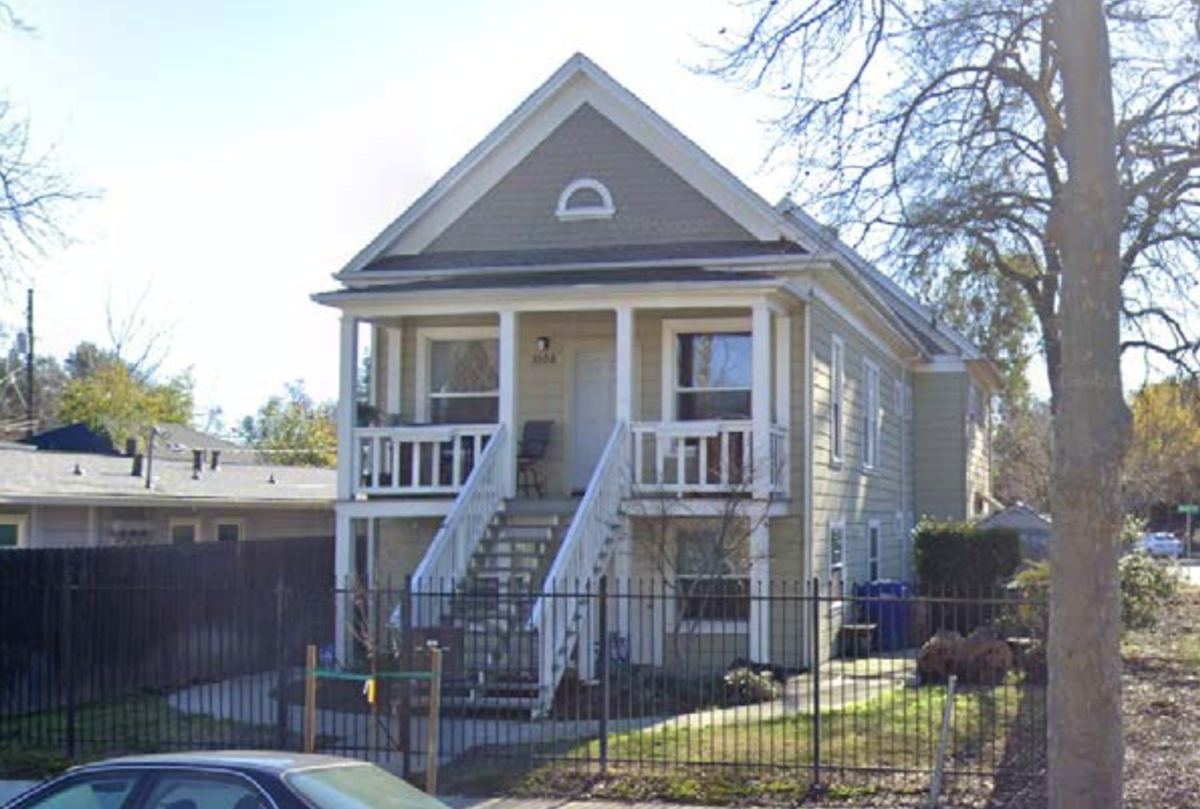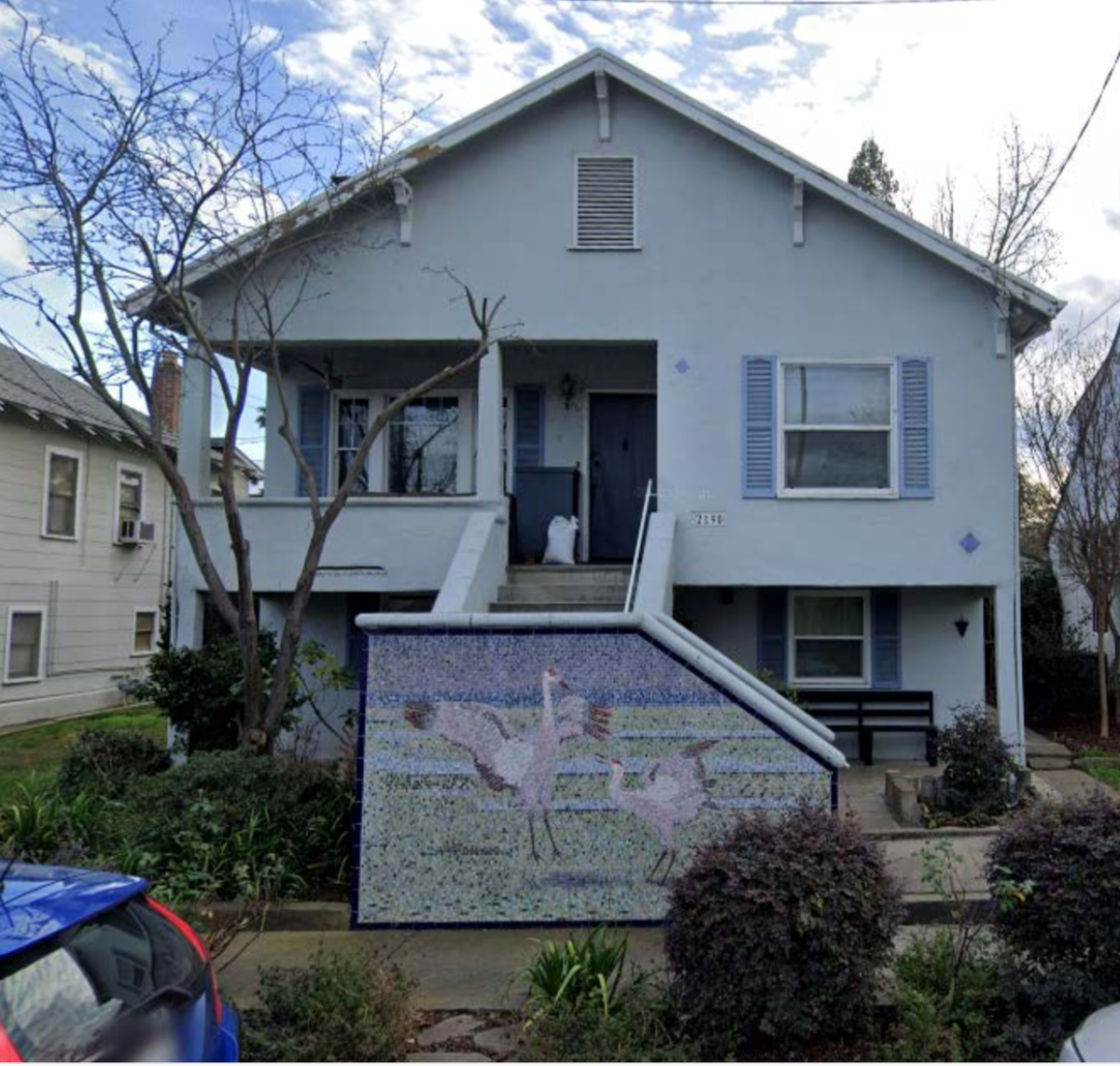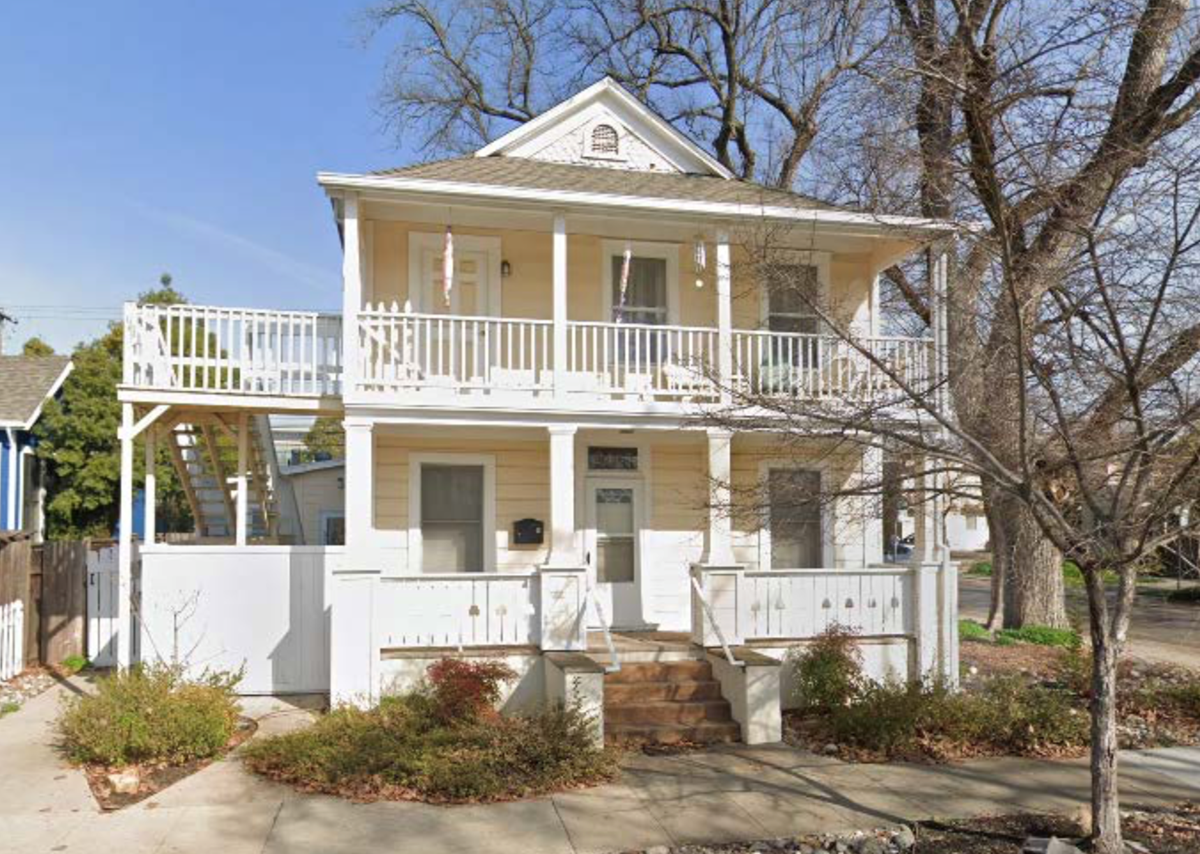Get PolitiFact in your inbox.

This fourplex in east Sacramento is an example of the 'missing middle' housing city planners hope to encourage. Photo courtesy city of Sacramento.
If Your Time is short
-
The city of Sacramento approved early plans in January that would make it one of the first major cities in the nation to eliminate rules allowing only for single family homes in neighborhoods.
-
The move follows failed efforts by California legislators to pass similar rules statewide.
-
Proponents say the goal is to permit lower cost housing options, such as duplexes and triplexes, and create more inclusive neighborhoods in areas that historically were off limits to residents of color due to racially restrictive covenants.
-
The plans are sometimes described as “eliminating or abolishing single family zoning,” but they would not prevent the construction of future single family homes.
For years, California state lawmakers have pushed ideas that would allow developers to build small apartment buildings, duplexes and triplexes in neighborhoods zoned almost exclusively for single family homes.
These bills, meant to address the state’s severe housing shortage and create more inclusive communities, have gained some traction. But following strong opposition, they ultimately failed at the state Capitol.
Just blocks away, a local proposal is moving forward that would make the city of Sacramento one of the first in California and the nation to eliminate rules that allow only for single family homes in neighborhoods. This zoning change would permit "missing middle" housing, a term that describes duplexes, triplexes and fourplexes, in these traditionally residential neighborhoods consisting of almost all single family homes.

An existing triplex in Sacramento's North Oak Park neighborhood. Photo courtesy City of Sacramento.
But there are questions and confusion about what eliminating single family zoning actually means. The misunderstanding is sometimes fueled by false and out-of-context claims about the plans, as we examined in a fact check last year when then President Donald Trump and Housing Secretary Ben Carson claimed California was trying to "abolish" single-family zoning, which we found was Half True but leaves a misleading impression.
Last week, the conservative website Breitbart falsely claimed the city of Berkeley "may end single family housing" and "the ability of families to live in a home where only their family resides." Those are both distortions of the plans, which the city voted to move forward with this week but would not bring an end to the traditional housing type.
PolitiFact California spoke with Sacramento city planning officials to learn more about how their proposal would work, how fast the changes might take place and debunk some misconceptions about it.
What Is ‘Single Family Zoning’ And Why Is It Contentious?
Single family zoning is a neighborhood model that allows only one housing unit per parcel, though duplexes are often allowed on corner lots, and is often defined by low-traffic streets and quiet cul-de-sacs.
The city of Sacramento’s reform proposal is part of its long-range general plan and won’t receive a final vote until late this year. But it’s drawn praise from some of California’s leading voices on housing policy, including the San Francisco lawmaker who has pushed for similar changes at the Capitol.
"Sacramento did a great thing," State Sen. Scott Wiener, D-San Francisco, said at a press conference last week. "I just really want to commend Mayor Darrell Steinberg and every member of the Sacramento City Council. … That’s a great model for other cities to look to."
San Francisco and San Jose are considering whether to move ahead with similar plans, while Wiener proposed legislation last week to make it easier for cities statewide to allow duplexes and small apartment buildings.
Sacramento would join Minneapolis and Portland as the only major metros to end single family only zoning.
Supporters of Sacramento’s plan say it will create much needed lower cost housing while also breaking down the legacy of exclusionary zoning in some of the city’s wealthiest and whitest neighborhoods where racially restrictive covenants were used in the first half of the 20th century to keep minority groups out.
The proposal has also stirred fear. Some who live in single family home areas say they’re worried higher-density homes, along with added traffic and parking issues, could change the character of their neighborhoods. Some also reject the notion that it will lead to more affordable housing, noting there is no mandate to require that.
"This is not doing anything for affordable housing," said Maggie Coulter, president of the Elmhurst Neighborhood Association, which represents homeowners in one of the city’s older single-family areas. "To suggest that this is doing that is nonsense."
What Does It Mean To Eliminate Single Family Zoning?
Housing experts and lawmakers describe Sacramento’s initiative and others like it as an effort to do away with single-family zoning. As we reported last year, non-housing experts find those descriptions confusing.
"It sometimes gets repeated as ‘abolish [or ban] single-family homes,’ which implies that someone will take a wrecking ball to existing homes. Not the same thing at all!" Jenny Schuetz, who studies housing policy at the Brookings Institute, a Washington, D.C., think tank, told PolitiFact California last year in an email.
For these reasons, Sacramento’s city planners do not use the phrase eliminating single family zoning, said Matt Hertel, the city’s acting long range planning manager.
Instead, here’s how Hertel explains the proposal:
"We’re changing our zoning to go from allowing exclusively single family homes to a greater variety of housing types that do still include single family homes."
 An existing fourplex in Sacramento's Land Park neighborhood. Photo courtesy city of Sacramento.
An existing fourplex in Sacramento's Land Park neighborhood. Photo courtesy city of Sacramento.
Would Single Family Home Construction Be Banned?
No, this is a misconception.
"We would not do that," confirmed Greg Sandlund, acting planning director for the city of Sacramento. "We are not banning single family construction."
Sandlund added that future subdivisions will still have single family homes, "but we would likely encourage a variety of housing types, not just only single family zones."
Sacramento also wants to create more housing sizes "to create a variety of income levels or rent levels and sales prices to make that area more accessible and inclusive," he said.
What Percentage Of The City Is Already Zoned Single Family?
In Sacramento, 70% of residential neighborhoods are zoned for single-family only, though duplexes are allowed on corner lots, according to a Frequently Asked Questions document produced by the city. Altogether, 43% of the city’s land mass is designated as single family zoning, an area covering about 43 square miles.
But in the past, some of Sacramento’s older neighborhoods allowed more variety of housing types, including the "missing middle" options.
"We know there are over 2,300 duplexes, triplexes and fourplexes in our older neighborhoods," Sandlund added.
Small multi-unit housing such as duplexes, triplexes and fourplexes are often called "missing middle" options because they’re more affordable than single family homes and less dense than large apartment buildings.
Over the past 50 years, most cities across America have built either single family homes or apartment buildings, and "not something in between," explained Sandlund.
Property owners in Sacramento’s single family neighborhoods can also build up to two accessory dwelling units, also known as granny flats, up to 1,200 square feet each on their lots.
How Does This Plan Address Racial Equity?
City officials say the proposal would break down the legacy exclusionary zoning in Sacramento’s single family neighborhoods by ensuring people of all races and a greater share of socio-economic backgrounds can live in areas with good schools, parks, proximity to jobs and transit.
These are "zip codes," Sandlund said, "where it’s been shown that you live longer if you live there versus other areas."
"They’re also highly segregated, mostly white, more affluent because folks [people of color] were not allowed to buy into those communities and build equity," he added.
Racially restrictive covenants, which were part of a racist system called redlining, were used in the first half of the 20th century as a way to keep African-Americans, Asian-Americans and other residents of color out of certain neighborhoods in Sacramento and in cities across America.
They appeared in the Sacramento region as early as the 1920s in what is now the Land Park neighborhood and Elmhurst and quickly spread to other parts of the city, according to a housing report by the Sacramento Area Council of Governments.
The U.S. Supreme Court ruled these racist covenants unconstitutional in 1948, but the Jim Crow-era language survives in the property records of many houses in Sacramento and across California, often without owners realizing it.
"Now those covenants are no longer in effect," Sandlund said. "But also if you want to live in a nice area, your only option is to rent one of these homes or buy them. And those rents and those sales prices are really high right now and they just continue to grow."
Would This Zoning Change Lead To Large Apartment Buildings?
The fear that giant apartment buildings will pop up in single family neighborhoods is misplaced and wrong, according to city planners.
"We want to check the size of development in these areas," Sandlund said. "Because in doing so when you check the size but allow more density, you get smaller, more affordable units. And we want the size and the look of these fourplexes, triplexes, duplexes to reflect the scale of the neighborhood."

An existing triplex in Sacramento's Curtis Park neighborhood. Photo courtesy city of Sacramento.
What’s The Timeline For Sacramento’s Proposal?
The city council is expected to vote on the general plan in December 2021. After, the city will need to update its zoning code in 2022 and could start allowing duplexes, triplexes and fourplexes in single family neighborhoods later that year.
How Will The City Decide Height And Size Limits?
Sacramento’s zoning code and citywide design standards would set the rules for how tall and large the new housing options could be. Right now, the maximum height for homes in the city’s R1 single family zone is 35 feet. Additionally, homes must be set back at least 20 feet from the street and 15 feet from the back fence. They can only cover "only cover typically 40 percent, not to exceed 50 percent of the lot," Hertel said. "So, you have to have open space on the lot."
"I haven’t seen the [city] council express a desire for large buildings in these areas, actually the opposite. They are concerned about their constituents. They are concerned about the scale," Sandlund said.
Should the city council approve the general plan this year, planners expect to update the zoning code in 2022 to define limits for the new housing options.
"We’re going to work diligently with the community and consultant team to really get those development standards correct for duplexes and triplexes and fourplexes," Hertel said. "The [building] envelope as you see it today won’t change substantially. It will be the same type of envelope. But the number of doors on that envelope could change. It could go from one to two to three doors."
Would This Actually Lead To More Affordable Housing?
Some opponents of the plan say it won’t create affordable housing given California’s exorbitant housing construction costs. But Sacramento city planners say the change will lead to "lower cost housing options," emphasizing it’s not a traditional, government-subsidized affordable housing program.
Still, dividing up a large home into multiple units leads to "some naturally affordable housing" that’s less expensive than renting or buying the whole house, Hertel said.
The change should produce "maybe not the affordability level for low and very low income communities," he continued, "but adds to the overall housing stock something that can be rented at a lower price than a 2,000 square foot unit."
Hertel said the city expects many of the initial housing options will come from existing homes that are retrofitted into duplexes, triplexes or fourplexes. Others would come from new construction on vacant lots.
Coulter, of the Elmhurst Neighborhood Association, said it’s not realistic to think that property owners who spend money to retrofit their homes into duplexes or triplexes will do anything other than charge market rate for the units, making them unaffordable for most Sacramentans.
She said Sacramento is already addressing its affordable housing shortage by building dense new apartment buildings in Midtown and downtown. Residents who moved to places like Elmhurst should be able to preserve the calm and quiet that attracted them in the first place, she continued, rather than have it transformed by added density, noise and cars.
"People want to have a choice," Coulter said. "Not everyone wants this."
How Many New Homes Would This Create?
In the first few years, city planners estimate perhaps 100 new units would be built annually. They emphasized the plan is a long-term policy meant to return greater housing diversity to existing neighborhoods.
Officials say this is one small slice of the city’s overall strategy to address the tremendous need for more housing in Sacramento. The state requires the city to accommodate and plan for 45,580 new housing units by 2029, including 17,000 that are affordable to the lowest-income residents.
How Would Parking Be Affected?
Sacramento’s single family R1 zoned neighborhoods require lots to include at least one off-street parking space per unit. Under the current parking standards, a duplex would require two off-street parking spaces, a triplex would need three spaces and a fourplex would require four, according to a city report on the plan.
How Does The Plan Address Climate Change?
Supporters say permitting more homes within existing neighborhoods will cut down on the need for sprawling new housing development. That, in turn, will reduce commutes and the vehicle emissions that make climate change worse.
"Having more housing opportunities near transit, near jobs, near schools," Hertel said, will help "reduce our carbon footprint."
How Can Sacramentans Get Involved?
Officials expect the city’s long-range planning document, the Draft 2040 General Plan and Climate Action and Adaptation Plan, will be available for public review in summer 2021. More information about it is at sac2040gpu.org. People can also sign-up for email updates at the end of this city FAQ document.
What are your questions about Sacramento’s plans to eliminate single family only zoning? Email PolitiFact California at [email protected]. We’ll consider them in future updates to this news article.
An earlier version of this article misstated the number of square miles zoned in Sacramento for single-family homes. The correct number is 43 square miles.
Our Sources
Matt Hertel, City of Sacramento’s acting long range planning manager, video interview, Feb. 18, 2021
Greg Sandlund, City of Sacramento’s acting planning director, video interview, Feb. 18, 2021
State Sen. Scott Wiener, news conference, Feb. 18, 2021.
Maggie Coulter, president of the Elmhurst Neighborhood Association, video interview Feb. 24, 2021.
City of Sacramento, Frequently Asked Questions document, accessed February 2021.
City of Sacramento, General Plan 2040 website, accessed February 2021.
Sacramento Area Council of Governments, Housing Policy Toolkit, June 2020
PolitiFact California, Trump Claims California Lawmaker Pushed To 'Abolish Single-Family Zoning.' Is He Right?, Aug. 17, 2020
Los Angeles Times, Sacramento may allow apartments in single-family home areas, Feb. 10, 2021
Sacramento Bee, Sacramento CA new housing proposal angers some neighborhoods, Jan. 10, 2021.
Sacramento Bee, Sacramento moves forward with controversial zoning change designed to address housing crisis, Jan. 19, 2021
Mercury News, Will San Jose move to densify single-family neighborhoods like Sacramento just did?, Jan. 25, 2021.
UC Berkeley Terner Center For Housing Innovation, Sacramento Leapfrogs State Capitol in Zoning Reform Race, Jan. 28, 2021
City of Sacramento, City Council Shows Strong Support For Allowing More Housing Types In Single-Family Neighborhoods, Jan. 25, 2021.
















































